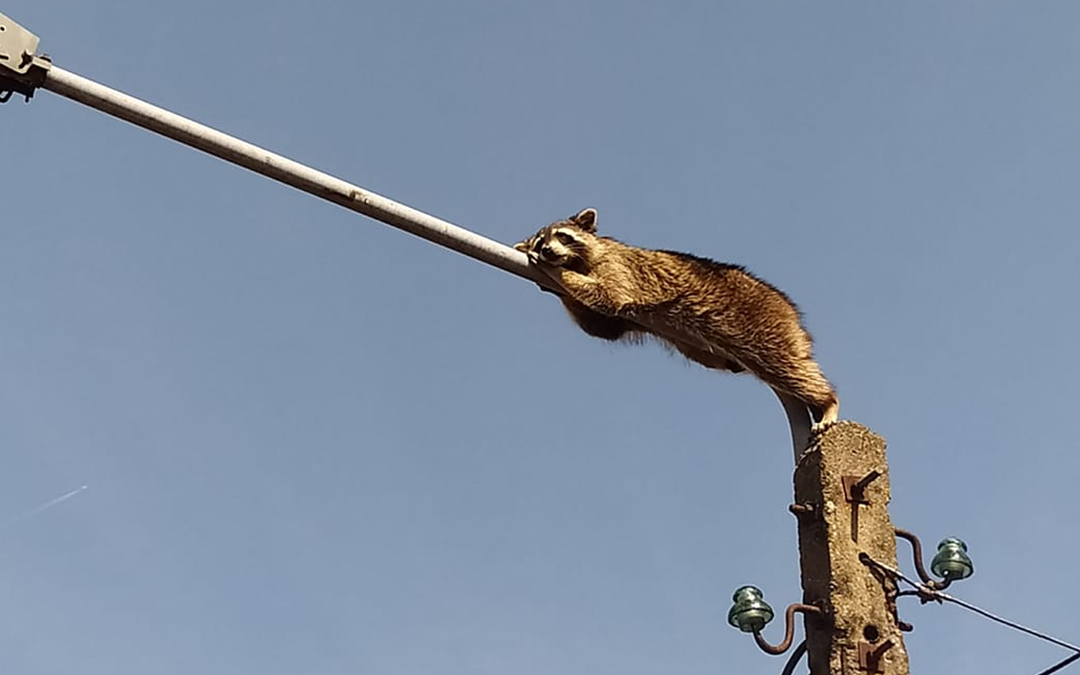Residents of a village in western Poland yesterday spotted an unusual occupant of a streetlamp – a sleeping racoon. The fire brigade soon came to the rescue, but the animal was unhappy about being disturbed and climbed back up again to its perch.
The volunteer fire brigade in the village of Żabów were notified of an animal sleeping on a streetlamp around noon on Wednesday, said the department’s president Michał Maduzia, quoted by TVN24.
Firefighters secured the area and called the power services to disconnect the electricity. Then, using a lift, they removed the racoon from the streetlamp and released it, but as they were packing their equipment the animal seized the opportunity to climb back up.
Once again, the firefighters managed to bring the racoon down, but this time they caught it in a bag designed for capturing animals. They released the racoon into the woods and it did not return to the lamp, said Maduzia.
Racoons, which originally come from North America (where they are spelt “raccoon”), are not native to Poland. However, having originally been brought to Europe for their fur, their population in central Europe has grown in recent decades, due to deliberate introductions and escapes.
The racoon population in Poland now numbers an estimate one million and has been present in the country since the early 1990s. They may have arrived from Germany, where a small number were released or escaped during the 1930s and 1940s (including when a bomb hit a fur farm during World War Two) and then began to breed in the wild.
Racoons are found mainly in the western part of Poland, including the provinces of West Pomerania, where Zabów is located, and Lower Silesia.
Map of racoon presence in Poland, source: General Directorate for Environmental Protection
When a racoon was spotted on camera in Warsaw in 2020, the discovery of the alien species prompted fears for local wildlife, and even that the animal could become an urban pest, as it has in Germany.
The video footage was recorded at the time by a camera trap in the Bielański Forest, eight kilometres north of Warsaw city centre, but racoon tracks were discovered in nearby Modlin three years earlier and locals reported sightings.
In recent years, racoons have begun to “wreak havoc in German cities”, reports Deutsche Welle. “Germany overrun by hordes of masked omnivores,” headlined weekly Der Spiegel.
Racoons can harm local wildlife, including feeding on chicks. They can also carry rabies, echinococcosis and the roundworm Baylisascaris procyonis. When they move into urban environments, as in the United States, they can learn how to break into homes and steal food, as well as plunder rubbish bins.
Warsaw City Forests advise anyone who spots a racoon to avoid feeding or touching it. Instead, they should report sightings to the police, who will try to catch the animal.
Main image credit: Ochotnicza Straż Pożarna w Żabowie KSRG

Alicja Ptak is deputy editor-in-chief of Notes from Poland and a multimedia journalist. She has written for Clean Energy Wire and The Times, and she hosts her own podcast, The Warsaw Wire, on Poland’s economy and energy sector. She previously worked for Reuters.




















